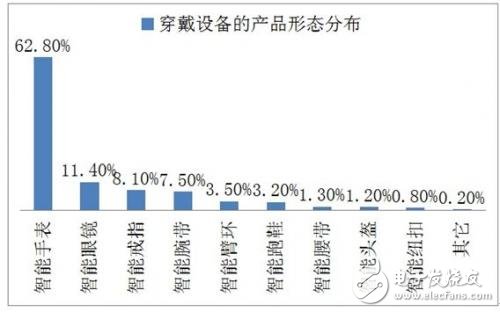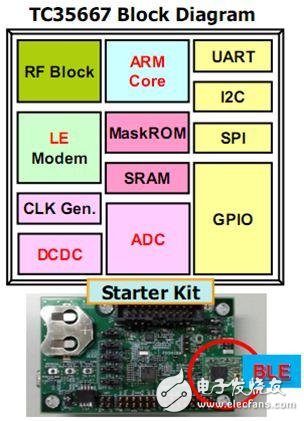Smart wear has stepped into a key crossroads, and manufacturers who have taken the lead have already launched second and third generation products, and then the company that is heading up is still defining products or R&D! With the prosperous stocks of related concepts and the consensus of research institutions, smart wear seems to usher in a new spring. However, the intelligent wear of scenery lurks many crises, and the related bottlenecks are full of challenges.
In the current product form of all wearable devices, the smart watch bracelet occupies 62.80%, followed by smart glasses 11.4%, followed by smart ring 8.10%, and the remaining smart armband, smart running shoes, smart belt, smart helmet , smart buttons, etc. The bracelet watch is the most mainstream product form, and the homogenization of functions has made its competition state into a melee.

Smart wear is favored in these three big blocks: fun (such as building a community, national interaction, interactive communication through a smartphone app), health care (such as sleep monitoring, exercise monitoring, and providing some advice), medical (There is some qualification certification here, which requires a strong manufacturer to intervene, and the profits are considerable).
However, smart wearable products generally lack a popular killer application, and smart wear has come to a trial stage. "Nobody knows before any killer application is formed. Otherwise, the analysis investment manager has long been a Google boss," said Wang Xiaobin, president of inWatch, to the author.
Each smart wearable device may be produced from a different manufacturer, but the device must be integrated and integrated from a cloud service. "This will surely appear that a large platform (super platform) will emerge, which will allow all kinds of wearable devices to be inserted." Li Zijun, the person in charge of the standard patent of Huawei's terminal cloud business department, said in a salon organized by the author. : In addition to the intercommunication between people and people, the interaction between things and things. Various mobile terminals are just an entry, and big data is still to be done by the super platform. Many companies want to do this platform: the mobile phone is plugged into WeChat, and other wearable hardware will also find a platform to plug in.
A variety of smart wearable devices have made a big splash at this year's CES (Casino International Consumer Electronics Show), and most research organizations believe that smart wear will explode this year (the exact number of forecasts is even based on whether Apple releases iWatch depends on the details).
However, this market is not clear. Last year, the survey of the shipments listed by the analysts gave a feedback to the market, and the actual answers obtained were quite different from those of the analysts. In addition, upstream small-screen suppliers have also revealed the mystery. From the number of shipments, the number is still very ugly (in other words, there is no amount). A giant friend who has done smart wearable waterproof nanotechnology also revealed to the author that the best company in China does not reach 100K per month. The survey agency said that it will start, but the first-tier market is still unclear. Some people even suspect that the intervention of capital has made the whole market impetuous.
Of course, with the giants such as Samsung and Apple entering the market one after another, the ecology of the entire supply chain will be greatly promoted and upgraded. The maturity of mobile Internet technology will also bring a good user experience to smart wearable devices. In particular, the industry chain has gradually improved, and the development of hardware technology has basically met the popularity of smart wearable devices.
In the hardware technology, it is necessary to mention the connection technology of the smart wearable device.At present, it is limited by the product form. Taking the watch bracelet and ring glasses as an example, the power consumption is the biggest flaw. Any functional experience that bypasses power consumption is nonsense! Some people have proposed wireless charging and solar power supply, but this charging method has many loopholes in terms of convenience and efficiency. Taking wireless charging as an example, it is still difficult to achieve wireless charging with an effective transmission efficiency of more than 50 cm over long distances, and the placement of the receiving end and the transmitting end; the compatibility of the three major standards (A4WP, PMA, and Qi) is still Block the road. Solar power can only be used in certain special applications.
The current practical power supply technology has to wait for a long time. The most reliable and widely accepted method is to reduce power consumption. Wireless connection is one of the biggest power killers.
At present, Bluetooth (BT) is still the most desirable transmission method for the wearable products, and many excellent Bluetooth solutions are gradually being valued by everyone. New products will generally be happy to use BT4.0 products that support BLE because they work at very low power.
In terms of BT4.0, iWatch's EM and Nordic, BCM, Toshiba, TI, CSR, Broadcom, qunTIc, STE, RDA, etc. have corresponding solutions. Relatively speaking, EM and nordic are more concentrated in non-mobile applications; EM is a BT BLE single chip that does not contain a microcontroller. TI's CC254X series, TI's CC254x series of chips include a 32MHz 8-bit enhanced 8051 core, 128KB or 256KB flash, 8k ram, peripherals are also more. Nordic's chips are NRF800X and NRF51822. The NRF51822 includes a 32bit, 16MHz cortex-m0 CPU with 128KB or 256KB of flash and 16kB of ram. The peripherals are also very rich. In addition, both it and quntic are known for their power consumption.
Toshiba has also been working in this market recently and has made major breakthroughs, such as its recently introduced BLE Bluetooth that integrates an efficient DC-DC converter (peak current consumption below 6mA, deep sleep current consumption below 100nA). Chip (TC35667, as shown below).

Legend: This integrated circuit also integrates an ARM processor that supports downloading and executing client programs stored in EEPROM. Support for application customization without using any external microcontroller. The small package (QFN40, 6mm x 6mm, 0.5mm pitch) delivers a Bluetooth low-power communication technology experience for small devices such as wearable healthcare devices, sensors and toys.
CSR is easier to use because of its xIDE development. The chip can be used directly without the use of the chip; the OTAU protocol can support the wireless update application. And the chip belonging to the SOC does not require an external processor. Suitable for simple, single function occasions. From a software perspective, of course, the CSR series is easy to develop. But it is more expensive to buy a development board, and the support is not particularly timely, the memory is small.
Zebra Symbol Barcode Scanner Battery
Symbol Ls4278 Battery,Symbol Scanner Battery,Symbol Barcode Scanner Battery,Symbol Scanner Battery Replacement
Shenzhen Sunwind Energy Tech Co.,Ltd , https://www.sunwindbatterylm.com